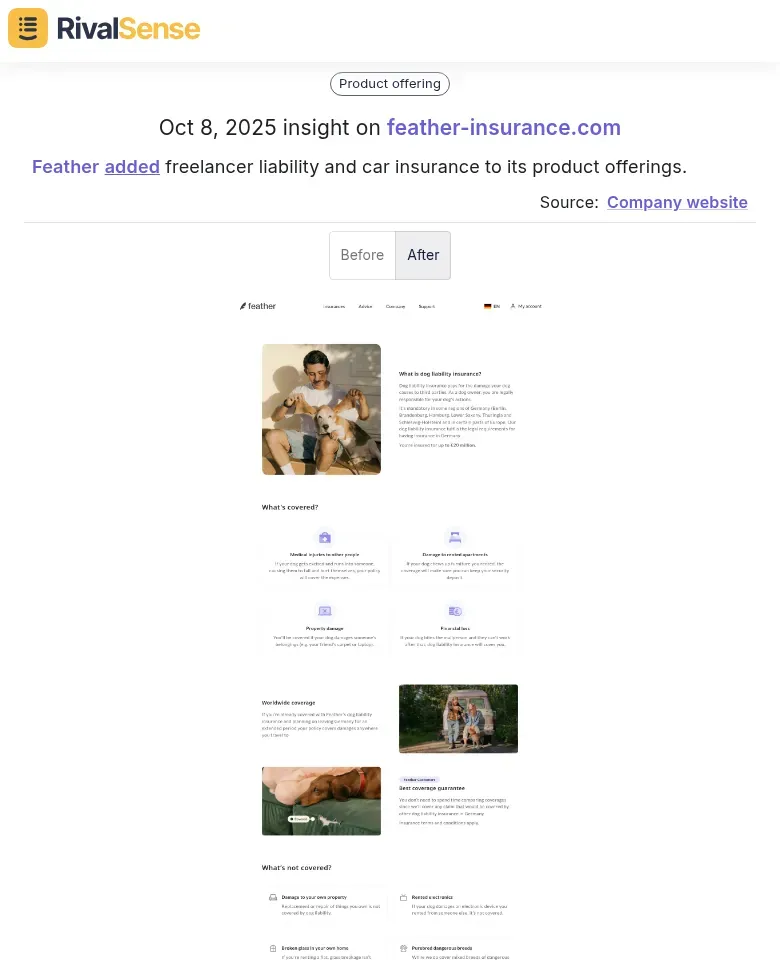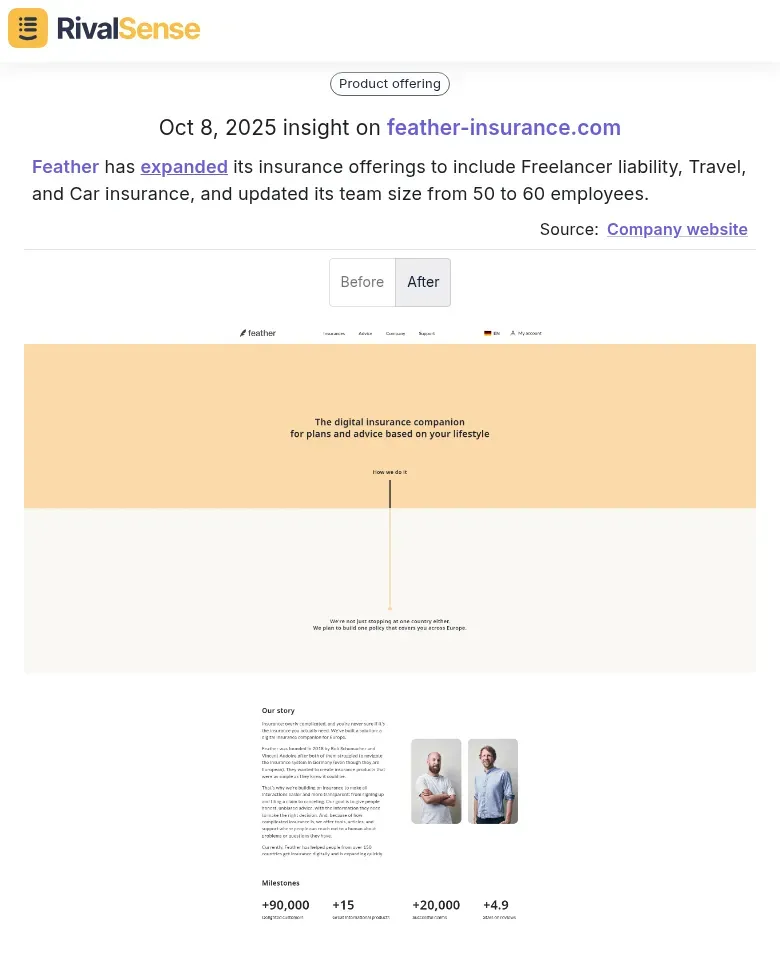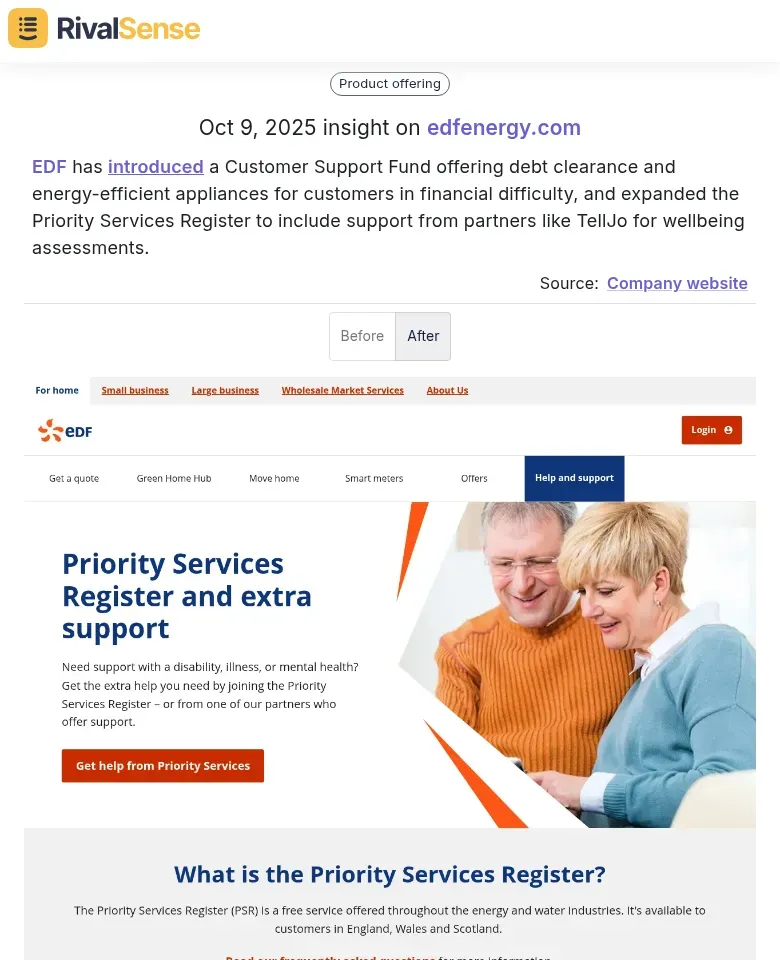Data-Driven Website Insights: Boost Key Account Performance
Introduction: The Power of Data-Driven Website Insights
In today's fast-paced digital landscape, your competitors' websites are treasure troves of strategic intelligence. Every homepage redesign, product page update, or content refresh signals a shift in their business priorities—whether they're targeting new markets, launching premium services, or responding to customer feedback. By monitoring these changes in real-time, you gain a crucial competitive advantage, allowing you to anticipate market moves rather than react to them.
Real-time website monitoring transforms raw data into actionable insights. Imagine tracking a competitor's sudden emphasis on enterprise solutions: this could indicate a pivot upmarket, prompting you to reinforce your own key account strategies. Connect these website updates to broader performance metrics—like traffic spikes correlating with feature launches or pricing page changes impacting conversion rates. This holistic view reveals not just what competitors are doing, but why, and how it affects their market position.
Practical Steps to Get Started:
- Set up alerts for homepage, pricing, and product page changes 🚨
- Correlate website updates with competitor press releases and social media
- Track how specific changes impact their web traffic and engagement metrics
- Use this intelligence to validate your own key account initiatives and identify gaps in your strategy
Analyzing Product and Service Expansions
Tracking competitor website updates reveals strategic shifts in real-time, helping you stay ahead of market trends. Monitor product pages, blog announcements, and service descriptions for new launches to uncover opportunities for differentiation and growth.
For example, if a rival adds AI features to their CRM, it signals market demand for automation. Tools like RivalSense can automate this tracking; they identified that Feather added freelancer liability and car insurance to its product offerings.  This type of insight is valuable because it helps you spot emerging customer needs and adjust your product roadmap to fill gaps or capitalize on trends.
This type of insight is valuable because it helps you spot emerging customer needs and adjust your product roadmap to fill gaps or capitalize on trends.
Assess market gaps by analyzing these expansions. Ask: What customer pain points are they addressing? Are they entering underserved segments? This uncovers opportunities you can exploit, such as targeting SMBs with tailored solutions if competitors focus on enterprise.
Practical Checklist for Product Expansions:
- [ ] Set up automated website monitoring for key competitors
- [ ] Track new products, pricing changes, and feature updates monthly
- [ ] Conduct SWOT analysis based on findings to guide strategy
- [ ] Test hypotheses with customer feedback before full-scale development
By acting on these insights, you can outmaneuver competitors and boost account performance through timely innovations.
Monitoring Organizational and Operational Changes
Monitoring organizational and operational changes provides a window into your competitors' scaling strategies and future directions. Track team growth, structural shifts, and leadership updates as early indicators of expansion or pivots.
For instance, a competitor hiring multiple sales managers may signal a push into new markets. RivalSense tracked that Feather expanded its team size from 50 to 60 employees.  This insight is valuable because it reveals hiring trends that can indicate strategic priorities, such as increased R&D for product launches or customer support enhancements, helping you anticipate and counter their moves.
This insight is valuable because it reveals hiring trends that can indicate strategic priorities, such as increased R&D for product launches or customer support enhancements, helping you anticipate and counter their moves.
Interpret hiring patterns to forecast market shifts: a surge in R&D roles often precedes product launches, while customer support expansions hint at service improvements. Use these insights to adjust your resource allocation and stay agile.
Practical Steps for Organizational Monitoring:
- Set up alerts for job postings on competitor career pages
- Analyze LinkedIn for team size trends and role additions
- Review annual reports for organizational charts
- Combine hiring data with financial metrics to validate scaling assumptions
Decoding Customer Support and Engagement Enhancements
Analyzing new support programs and strategic partnerships reveals powerful customer retention strategies that can inspire your own initiatives. Track competitors launching dedicated success teams, 24/7 chat support, or industry collaborations to understand shifts toward proactive engagement.
For example, EDF introduced a Customer Support Fund offering debt clearance and energy-efficient appliances for customers in financial difficulty, and expanded the Priority Services Register to include support from partners like TellJo for wellbeing assessments.  This insight is valuable because it demonstrates how competitors are enhancing loyalty through support innovations, allowing you to benchmark and adopt best practices to reduce churn and increase lifetime value.
This insight is valuable because it demonstrates how competitors are enhancing loyalty through support innovations, allowing you to benchmark and adopt best practices to reduce churn and increase lifetime value.
Evaluate expanded services by mapping them to customer financial needs and operational challenges. If competitors add payment flexibility options or ROI calculators, they're targeting budget constraints and decision-making hurdles.
Extract Best Practices for Building Loyalty:
- Implement early warning systems: Track usage drops and reach out before churn
- Create tiered loyalty programs: Reward high-value customers with premium features
- Develop customer advisory boards: Involve clients in product roadmap decisions
- Launch save campaigns: Offer personalized incentives for at-risk accounts
- Build community platforms: Foster peer-to-peer support and knowledge sharing
Practical Checklist for Support Enhancements:
- [ ] Monitor competitor knowledge base updates
- [ ] Track support response time improvements
- [ ] Analyze customer review responses
- [ ] Benchmark loyalty program structures against industry standards
Translating Insights into Actionable Strategies
Translating competitor website intelligence into actionable strategies requires a systematic approach to ensure data drives decision-making. Start by analyzing competitor website changes—new features, content updates, or pricing adjustments—to identify market trends and gaps that align with your key accounts' needs.
For example, if a competitor launches a customer portal, consider developing a superior version to address unmet needs. Prioritize initiatives based on observed trends to maximize impact and resource efficiency.
Checklist for Prioritizing Initiatives:
- [ ] Assess strategic fit with key accounts' pain points
- [ ] Evaluate resource requirements and constraints
- [ ] Gauge potential ROI and alignment with business goals
- [ ] Focus on high-impact, low-effort tactics first, like optimizing landing pages based on competitor A/B test results
Measure impact by tracking key metrics: account engagement rates, conversion lifts, and retention improvements. Implement A/B tests to validate data-driven decisions, ensuring continuous refinement and tangible performance boosts.
Conclusion: Sustaining Competitive Edge with Continuous Monitoring
Establishing ongoing competitor tracking requires systematic processes to maintain a proactive stance in the market. Set up automated alerts for website changes—new pages, pricing updates, feature launches—using tools like RivalSense to streamline data collection and analysis.
Schedule weekly reviews of competitor activity and integrate findings into monthly strategic planning sessions. This approach transforms reactive responses into strategic advantages, ensuring sustained competitive edge and driving long-term growth through informed, data-backed decisions.
Checklist for Continuous Monitoring:
- [ ] Monitor homepage updates for branding and messaging shifts
- [ ] Track blog content frequency and topic trends
- [ ] Analyze new case studies for customer success stories
- [ ] Review career page expansions for hiring insights and organizational growth
Build a culture of proactive intelligence by assigning team members to specific competitors and sharing insights in regular meetings. Use competitor data to inform your roadmap and identify market gaps effectively.
Ready to transform your competitor insights into action? Try RivalSense for free today and get your first competitor report to start boosting your key account performance! https://rivalsense.co/
📚 Read more
👉 Key Account Tracking Customization: Strategic Insights from Penneo vs. Competitors
👉 Leverage Competitor Pricing Insights from Customer Reviews
👉 How Executive Moves Reveal Competitor Strategies: A Practical Guide
👉 Unlocking the Key Benefits of Competitor Analysis for Business Growth
